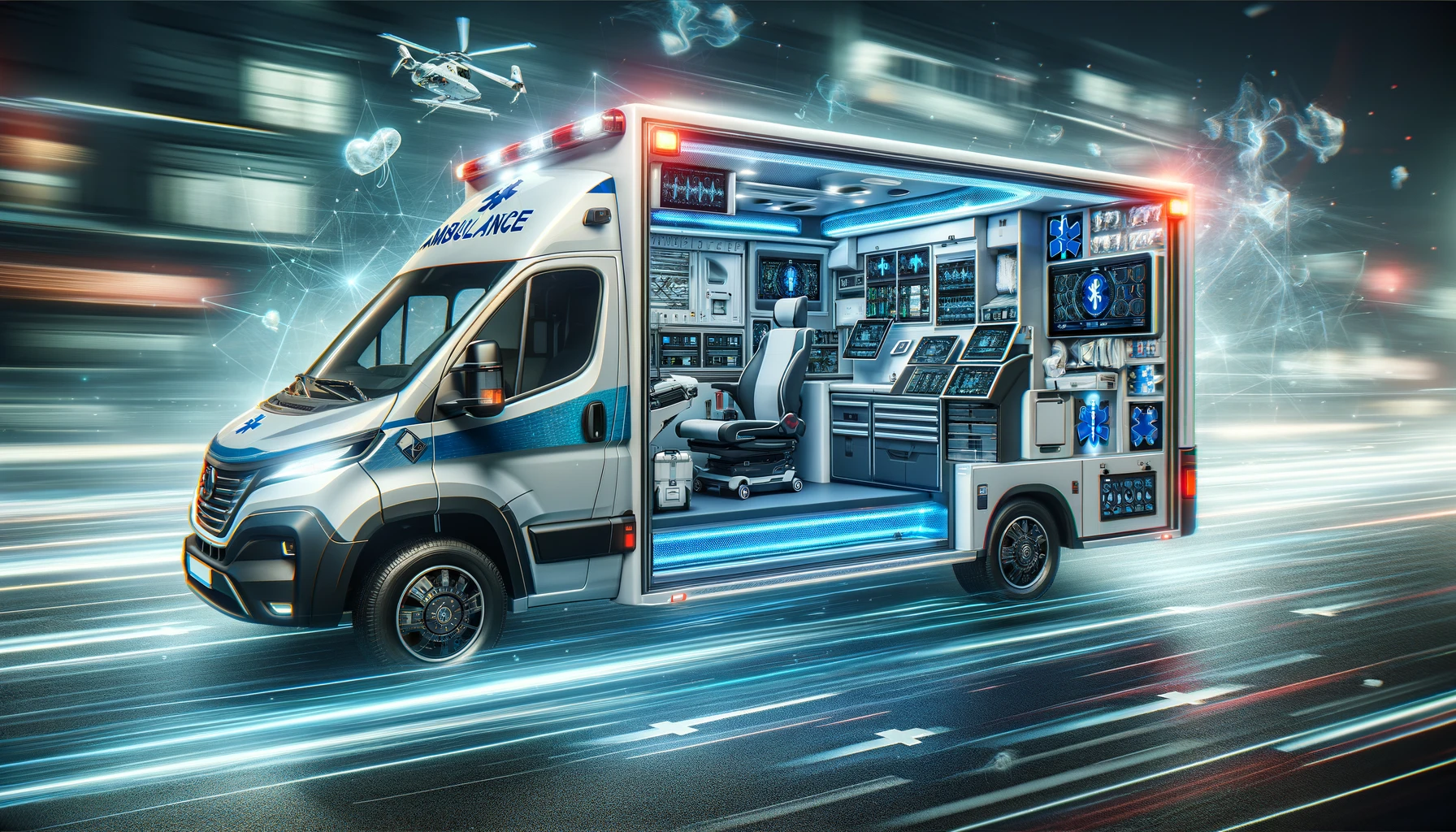
Revolutionizing Emergency Care: The Rise of Smart Ambulances
Exploring Innovations in Emergency Medical Services for Enhanced Patient Care
Emergency medical care faces an ongoing challenge against time, with an increasing need for efficiency amid a shrinking EMS workforce. The 2022 American Ambulance Association study, as reported by CBS News, revealed a significant shortage of qualified candidates for EMT and paramedic positions, emphasizing the urgency to explore solutions. Could the future of emergency care lie in the integration of smart ambulances, wirelessly connected vehicles equipped with cutting-edge technology? Let’s delve into the potential impact of these innovations on the landscape of emergency medical services (EMS).
Addressing Workforce Shortages with Innovation
The EMS workforce shortage poses a critical issue that smart ambulances aim to mitigate. With better data driving strategic resource management, these technologically advanced vehicles could enhance the efficiency of patient care and minimize the effects of the ongoing shortage. As the aging population grows, the need for medical care increases, making smart ambulances a strategic investment in the future.
The Crucial Role of Response Time
Response time is paramount in emergency medical care, and smart ambulances aim to optimize this metric. These vehicles act as a bridge to the highest levels of medical care, focusing on questions such as:
- How quickly can EMS crews arrive on the scene?
- What is the safest and quickest route to the nearest medical facility?
- How soon can an emergent patient be transferred to hospital care after arriving at the emergency department?
Technology Features in Smart Ambulances
The technological advancements in smart ambulances are extensive, responding to the evolving needs of emergency medical services. These vehicles use 4G LTE or 5G connectivity, incorporating features such as:
- Near-real-time virtual doctor interactions for on-the-spot diagnostics
- RFID technology for tracking and managing medical equipment, ensuring essential supplies are on board
- GPS traffic monitoring to optimize routes and avoid delays, ensuring swift responses
Virtual Doctor Interactions: Transforming Ambulances into Mobile Clinics
One of the groundbreaking features is the capability for near-real-time virtual doctor interactions. This innovation allows doctors to diagnose patients while in transit, turning the ambulance into a mobile clinic. This not only reassures patients but also prevents unnecessary transports for cases that can be treated on the scene.
RFID Technology: Ensuring Efficient Inventory Management
Smart ambulances incorporate RFID technology, enabling providers to track medical equipment. This system helps in monitoring expiration dates, ensuring timely restocking, and reducing the time needed for inventory tasks at the station before the next call.
GPS Traffic Monitoring: Navigating Efficiently in Real-Time
The use of GPS in smart ambulances leverages near real-time data from local traffic agencies. This information is continuously updated to optimize routes, avoiding traffic and road construction. Small adjustments en route can make a significant difference in patient outcomes.
Hospital Compatibility and Communication: Seamless Transition of Patient Data
Smart ambulances facilitate near-real-time communication between providers and clinicians on board. The patient’s data is immediately transferred to the receiving facility, allowing emergency department staff to prepare for the ambulance’s arrival. This seamless data transfer expedites the transition from pre-hospital care to medical facility treatment.
Impact on the EMS System: Streamlining Efficiency
The key benefit of smart ambulances lies in their efficiency. By streamlining data flow and optimizing processes, these vehicles empower EMS providers to deliver faster, smarter pre-hospital healthcare. As the EMS industry focuses on recruitment efforts, the integration of smart ambulances enables agencies to make the most of their current personnel.
Network Requirements for Futuristic Ambulance Technology
Connectivity is paramount for smart ambulance operations, requiring fast and reliable network access. A cellular network provides near-real-time data, enabling providers to make informed decisions promptly. This connectivity is crucial for the future of healthcare, facilitating innovations such as applied artificial intelligence and process automation.
Verizon’s Investment in Healthcare Technology
Verizon is at the forefront of investing in healthcare technology to support providers and communities. By advancing digital intelligence, patient experience, security, and remote care, Verizon contributes to the evolution of smart ambulance operations.
In conclusion, smart ambulances represent a transformative shift in emergency care, leveraging technology to address workforce shortages, optimize response times, and enhance patient outcomes. As these innovations continue to evolve, the healthcare industry is poised for a future where connectivity and efficiency define the standard of emergency medical services.


